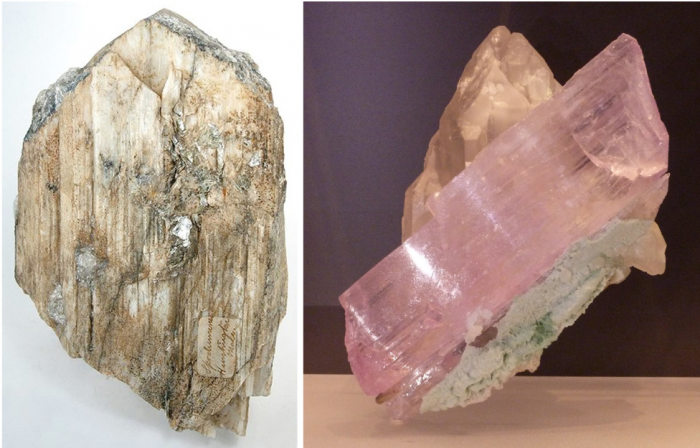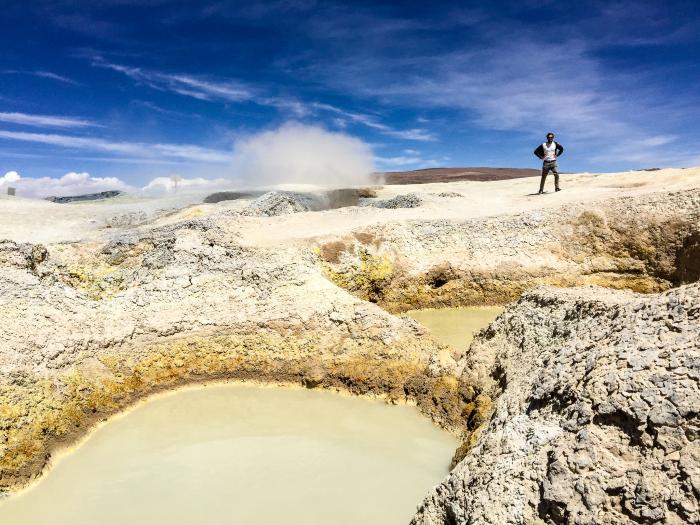Resource Constraints and Environmental Considerations
With energy storage industry changing fast, technology maturing, costs dropping, we can envision major shifts in both portable and stationary power markets. Cars and trucks will be powered by lithium-ion batteries rather than fossil fuel based internal combustion engines. Rechargeable lithium-ion batteries are also becoming crucial components of the new generation power grid to store increasing amounts of energy produced by solar and wind farms. This major technological scale-up will rely on the supply of new critical minerals and materials, such as lithium (Li), the lightest metal in the periodic table.
When thinking about this new future for our transportation and power industry, a few questions pop in our minds:
Where are we going to get all that lithium? (We are talking possibly 4-5 times topping the current market, perhaps more!) Is there enough of it on Earth? We are running out of oil, so would running out of lithium would get us in a similar trouble? How would prices for lithium affect international energy market and national economies of countries with higher or lower natural resource of this metal?
Companies such as Tesla, for example, already began a quest for control over lithium deposits across the globe, including countries in South America, Africa, and Australia.
Finally, mining and extraction of lithium at the accelerated rates will inevitably lead to serious environmental impacts on local and regional ecosystems (like any mining does), so how do these activities need to be regulated to keep this technology from becoming another global threat to biodiversity and human health?
To clarify some of these concerns, we are going to take a quick dive into the lithium lifecycle and learn about the key geological sources of its stock.
Reading Assignment
Web article: Gramling, C., The Search for New Geologic Sources of Lithium could Power a Clean Future, Science News, Vol. 195, No. 9, May 11, 2019, p. 40.
Mineral Spodumene is considered one of the key lithium ores and has been mined widely for multiple markets and applications.

Prospecting for lithium and estimates of natural reserves have been done by U.S. Geological Survey at different years, and numbers keep changing due to discovering new deposits and, on the other hand, due to increasing demand for lithium from the energy storage and vehicle industry. For example in 2015, USGS estimated that world has lithium reserves for 365 years based on the global average production rate of 37,000 tons per year. Since then production has been doubled at least and the estimate shifted.
This is relatively recent (February 2019) USGS report, which provides some statistics on currently estimated reserves and production.
Reading Assignment
USGS Report: Mineral Commodity Summaries: Lithium, 2019
This information can be the starting point for assessing the available reserves for Li-ion battery manufacturing and forecasting Li markets.
Countries that contain the largest lithium reserves include Argentina, Chile, Australia, and China. Among them, Australia is currently the leader in mining and production. You can make your own calculations based on the data provided and compare to some other online reports (but I am sure this information is not set in stone).
Next, answer a few self-check questions based on the above readings.
Check Your Understanding Question 8 (Multiple Choice)
Check Your Understanding Question 9 (Essay)
What is currently the most economically viable source of naturally available lithium at the moment due to the cheapest method of extraction?
Check Your Understanding Question 10 (Multiple Choice)
On the other side of the equation, we also need to understand the options for lithium disposal and recycling in the end of the battery lifetime.
Environmental Risks
Production and disposal of Li-ion batteries are associated with an array of environmental and health impacts, which include soil and water pollution due to open-pit Li mining, bio-toxicity, aquatic ecotoxicity (impact on fish), release of carcinogenic substances, high water and energy use. These impacts are not only associated with Li metal itself, but also with chemicals used to extract it from rocks or brines.

Supplemental Reading:
Website: Check out this website for more information on Li mining and extraction, methods, and major impacts in various regions of the World.
Recycling of components and materials contained in Li-ion batteries becomes of paramount importance to mitigate two major issues: (1) resource depletion and (2) environmental pollution. Effective recycling programs would help reduce the need for opening new Li mines and offset the rate of lithium resource exhaustion at the national and global scales. Recycling routes would also help divert the battery products from landfills and thus avoid risks associated with chemical dispersion in soils, streams, and aquifers.
That said, the Li-ion battery recycling industry is really at its infancy still:
- Currently recycling of EV batteries consists of storage, landfill, and/or pyrometallurgical processes (burning in smelters).
- China - Legislated that all EV manufacturers and importers come up with a feasible recycling program.
- European Union - Has set a timeline for battery manufactures and importers to recycle spent lithium ion batteries.
- Canada - Has three provinces (British Columbia, Manitoba and Quebec) with mandatory recycling programs.
- USA - There is no Federal Regulations for battery recycling, some States do have.
(Source: Seeking Alfa, 2018)
For the next discussion assignment, we will try to search for signs of new business developments and regulations inside and outside of the U.S. related to Li-ion battery recycling and see how things have improved over the recent couple of years.
